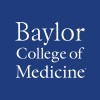
Supraglottic Airway Devices in Pediatric Difficult Airway Situations
Airway MorbidityEmergenciesThe purpose of the study is to compare three supraglottic airway devices (Combitube, Easytube, laryngeal mask airway) to endotracheal intubation in a simulated difficult airway scenario in a pediatric manikin.

Saline Against Lactated Ringers or Plasmalyte in the Emergency Department
Critical IllnessAcute Kidney InjuryThis study will be a cluster-randomized, single-center trial comparing 0.9% saline (normal saline) vs physiologically-balanced crystalloid fluids (Lactated Ringers or Plasmalyte A) for intravenous fluid administration in the emergency department.

Protocol to Ease Acute Cephalalgia in Emergency-department
CephalalgiaThe purpose of this study is to determine if the use of a therapeutic and global protocol to relieve cephalalgia is helpful in the emergency department of Grenoble University Hospital.

Texting to Promote Tobacco Abstinence in Emergency Department Smokers: A Pilot Study
SmokingTobacco AbstinenceThis is a pilot study to test the feasibility of conducting a text based smoking cessation trial with Emergency Department patients who are smokers.

EXTEND (International): Extending the Time for Thrombolysis in Emergency Neurological Deficits (International)...
StrokeThe primary hypothesis being tested in this trial is that ischaemic stroke patients selected with significant penumbral mismatch (according to imaging criteria) at 4.5 (or 3 hours depending on local guidelines) - 9 hours post onset of stroke or after 'wake up stroke' (WUS) will have improved clinical outcomes when given intravenous tissue plasminogen activator (tPA) compared to placebo.

Flexible Tip Bougie Catheter Intubation
Emergency MedicineEndotracheal Intubation1 moreWe, therefore conducted a randomized cross over study to evaluate the usefulness of this new device use by experienced anesthesiologists in several airway manikin scenarios. We hypothesized that in the hands of experienced anesthesiologists the new Flexible Tip Bougie catheter would perform comparably to the standard bougie catheter) in the normal airway scenario. In the difficult airway (both tongue edema, manual in-line stabilization, or cervical collar stabilization), we hypothesized that the new Flexible Tip Bougie catheter would prove superior to the standard Bougie stylet.

Electronic Defaults to Reduce Opioid Prescribing in Emergency Department and Primary Care Settings...
Acute PainThe goal of this research is to investigate the impact of changing opioid analgesic prescribing defaults on the quantity of opioids prescribed for acute non-cancer pain in adult primary care and emergency department settings. We will change prescribing defaults for select short-acting opioid analgesics including immediate release oxycodone and hydrocodone as well as codeine and tramadol, including their co-formulations with acetaminophen. In a cluster-randomized trial of matched pairs of Montefiore Medical Center clinical sites, stratified by specialty and teaching status, we will evaluate the impact of this intervention on patient-level outcomes using 18 months of data (6 months pre-intervention and 12 months post-intervention).

Assessment Of Educational Strategies In Heart Failure Patients Presenting To The Emergency Department...
Heart FailureThis study evaluates the impact of a new education-based intervention on outcomes in un- and under-insured Heart Failure (HF) patients presenting to the Emergency Department (ED) for care. Intervention patients will receive personalized education regarding their condition, pre- and post-testing of their HF knowledge base, and ED standard of care during the enrollment (index) visit. Patients will then be contacted via telephone 30 days post-index visit for re-testing and reinforcement of previously learned material. Patients in the control group will receive ED standard of care.

Program of Intensive Support in Emergency Departments for Care Partners of Cognitively Impaired...
DementiaDementia is a common problem for older patients presenting to emergency departments and for the family caregivers who often lack support, understanding, and skills to manage the problems related to the need for emergency department visits. The purpose of Program of Intensive Support in Emergency Departments for Care Partners of Cognitively Impaired Patients (POISED-CPCIP, here on referred to as POISED) randomized controlled trial is to use previously established quality improvement methods of root cause analysis to uncover reasons for emergency department use and to focus on caregiver activation within a program of dementia care management. The goals of this study are to reduce recurrent emergency department visits and improve caregiver symptoms of depression, anxiety and need for social support.

Local Administration of Tranexamic Acid in Upper Gastrointestinal Hemorrhage
Gastrointestinal HemorrhageTranexamic Acid2 moreUpper gastrointestinal hemorrhage is a frequently diagnosis in emergency departments. Although new drugs and endoscopic techniques were easily applied in various settings in this condition, the role of local administered therapies such as antifibrinolytic agents remain unclear. The investigators aimed to compare standard therapy (proton pump inhibitors, endoscopic treatments etc.) and standard therapy + local administered tranexamic acid in upper gastrointestinal hemorrhage in a double-blind, randomized trial.
